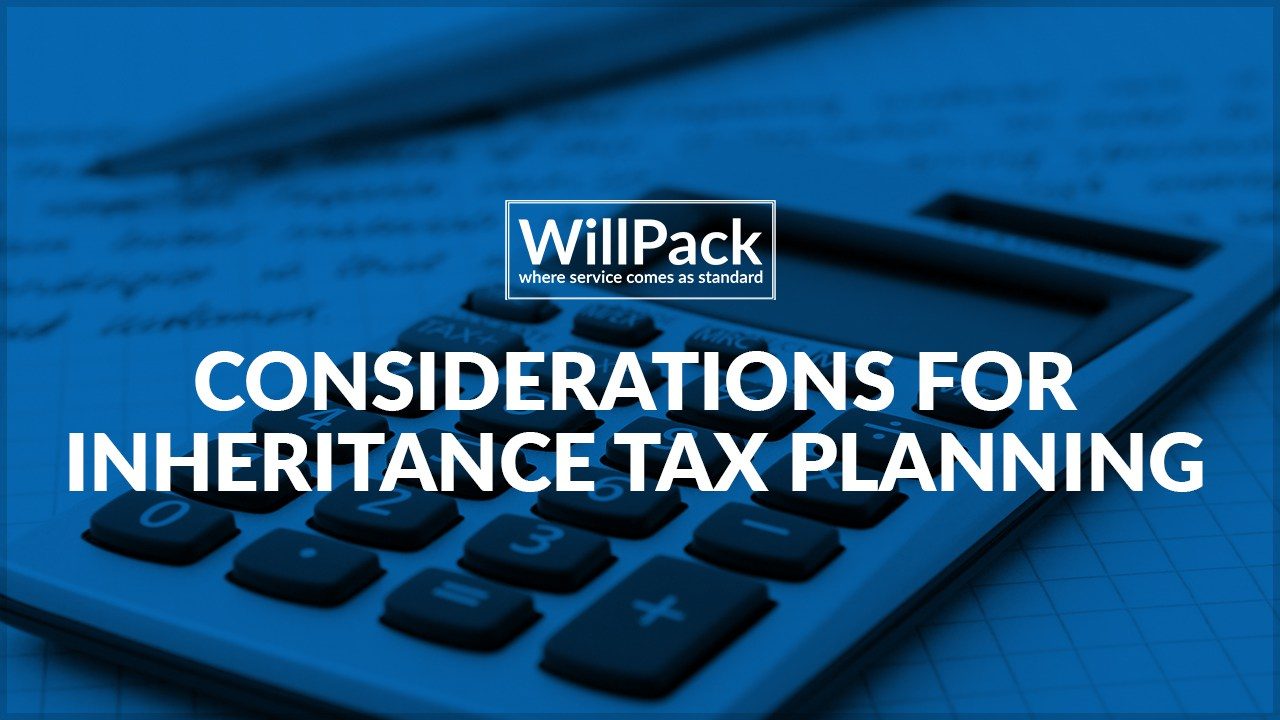An important part of estate planning is to determine if the testator has an Inheritance Tax (IHT) liability. IHT is a tax charged when wealth changes hands, most commonly charged on death, but may also be charged during lifetime.
IHT is charged when assets above the Nil-Rate Band (NRB) are passed. Each person has their own NRB available to them that will be applied to any gifts made, either by Will or during lifetime to claim their own tax-free allowance. The current NRB is £325,000, while the IHT rate is 40%.
What needs to be considered?
When looking at IHT planning, there are many aspects to consider to determine if IHT planning is required, or if any further advice needs to be provided;
- Is the testator married?
- Is the testator widowed?
- Was the late spouse’s NRB used?
- What is the value of the estate?
- Individual and joint estates are required if talking to a couple
- Are any direct descendants of the testator inheriting the main residence?
- Has the testator made any gifts in the past 7 years, including to any Lifetime Trusts? If so;
- to whom?
- what was the value of the gifts?
- Does the testator still benefit from these gifts? E.g. receive an income, or still live in a gifted property. Consider Gift of Reservation of Benefit (GROB).
- Does the testator(s) own a business that qualifies for Business Property Relief (BPR) or Agricultural Property Relief (APR)?
These questions will help to determine what reliefs are available to the testator.
Is the testator married and is the testator widowed?
The necessity of both of these questions can be covered in one explanation. If the testator is married, or in a civil partnership, any gifts made to the spouse will be exempt from IHT. They would also be able to benefit from the Transferrable Nil-Rate Band (TNRB) on second death, which will increase the tax-free allowance available. However, how much this is increased by will be determined by any gifts made from the first spouse that was made to non-exempt beneficiaries, and the NRB available on second death.
For example, if Mr Smith died first and his Will made a gift of £100,000 to a child, but the remaining estate passed to Mrs Smith. The gift of £100k used up 30.77% of Mr Smith’s NRB, therefore 66.23% of his unused NRB can be transferred to Mrs Smith’s estate on her death to increase her tax-free allowance.
The Residence Nil-Rate Band (RNRB) is also Transferrable. A detailed explanation of the RNRB can be found in the WillFact on our members area.
If the testator(s) is not married or in a civil partnership, no spousal exemption or TNRB will be available.
What is the value of the estate?
This is the clear indicator of a potential IHT liability. If the testator(s) estate is over the NRB, then IHT will likely be due on death, subject to any other relief’s or previous IHT planning.
When dealing with a married couple or civil partners, it is also important to note if the individual estates are unequal as this may effect how a Will should be drafted. WillPack draft most Wills including a survivorship clause, meaning that the spouse must survive the deceased by 30 days before they can inherit. The main reason for using a survivorship clause is to prevent assets from passing between two estates in close succession. However, there are some circumstances where it would be of no advantage to include a survivorship clause. WillPack will review the use of survivorship clauses on a case by case basis, which is one of the reasons why we ask that the estate valuation page of the instruction form is competed.
Are any direct descendants of the testator inheriting the main residence?
Following the introduction of the RNRB in April 2017, each person now has an additional tax-free allowance which can be applied to their main residence, or a property a person owns and previously used as the main residence. The executors of a testator’s estate can only claim this additional allowance if the main residence is passing to those defined as direct descendants by HMRC.
A detailed explanation of the RNRB can be found in the WillFact on our members area.
Has the testator made any gifts in the past 7 years, including to any Lifetime Trusts?
If so, to whom, what was the value of the gifts, and does the testator still benefit from these gifts?
Common practice for IHT planning is to make Potentially Exempt Transfers (PETs). These are gifts that the testator can make with the intention of reducing their taxable estate on death. PETs can be made in the form of money or property, and can be paid either directly to the recipient, or into a Lifetime Trust. When making PETs, it is important that the testator receives no further benefit from the gifted asset and survive the gift for 7 years in order for the gift to leave the taxable estate.
There is a taper relief available if the testator survives the gift by 3 years on the IHT due, along with other gift exemptions that will not attract IHT. Please see our ‘Introduction to Inheritance Tax’ WillFact on our members area for more information.
If the testator does retain any benefit in gifted assets, this will be considered a GROB, meaning the gifted asset will not leave the testator’s taxable estate.
Does the testator(s) own a business that qualifies for Business Property Relief (BPR) or Agricultural Property Relief (APR)?
In certain circumstances, certain business or farming assets will qualify for either a 50% or 100% relief from IHT. If the testator does not know if their business qualifies for BPR, it would be advisable for them to speak to their company accountant for this information.
(* all references to a spouse includes a civil partner)


 © Trust Wills & Probate Limited t/a WillPack. All rights reserved.
© Trust Wills & Probate Limited t/a WillPack. All rights reserved.
One comment
Pingback: Options for Inheritance Tax Planning — WillPack
Comments are closed.